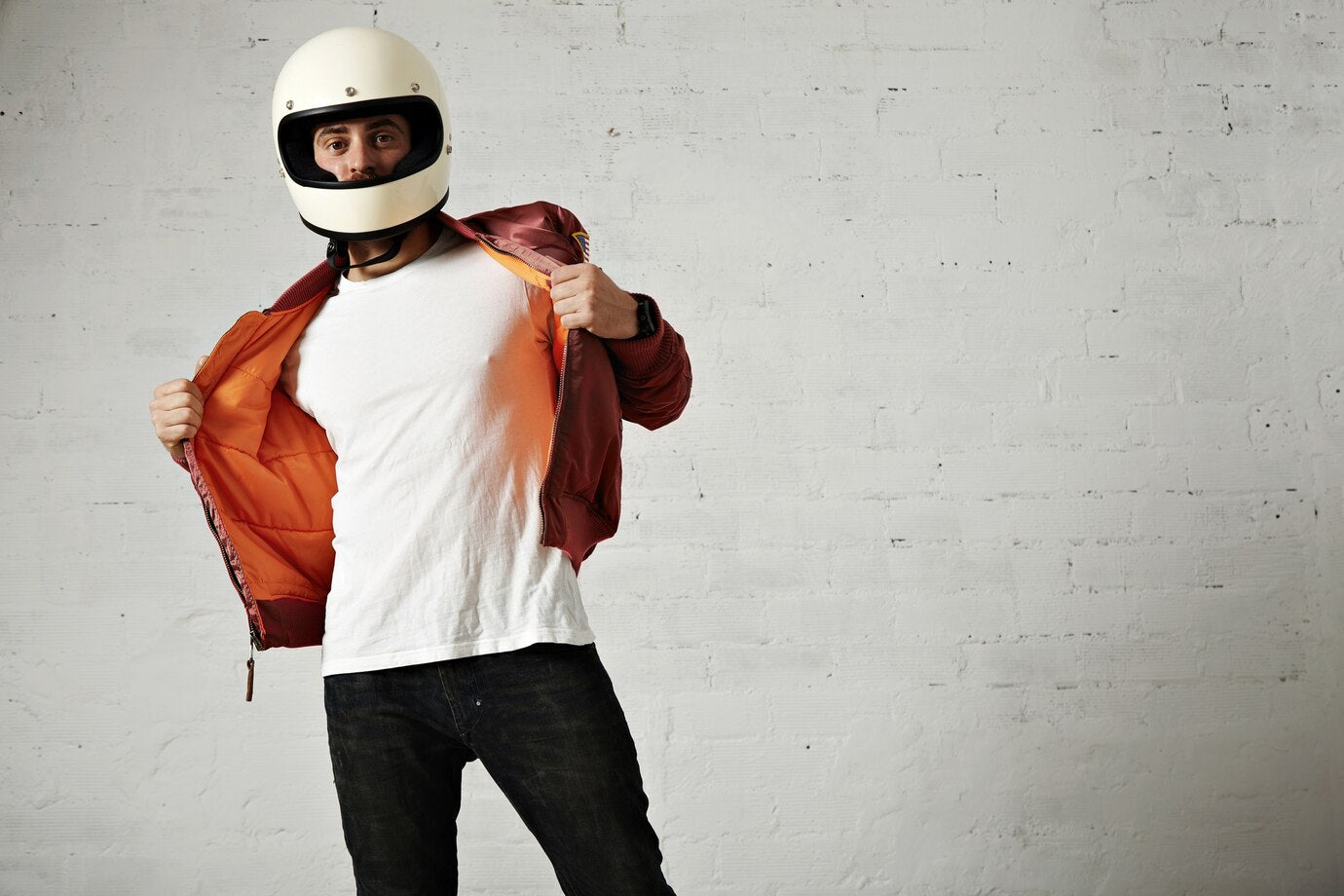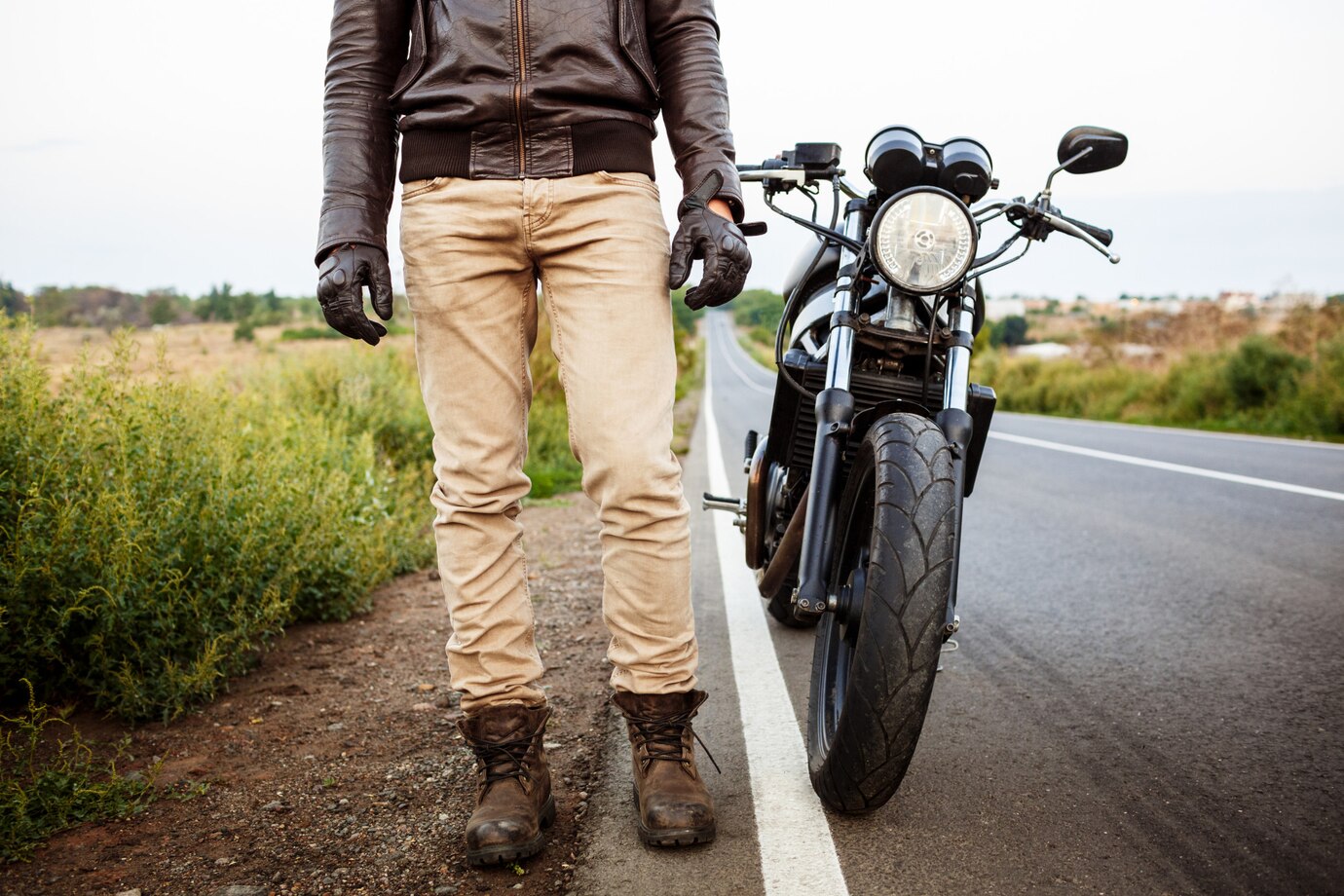
Leather vs Textile Motorcycle Jackets: Which Should You Choose?
There are not many things when it comes to motorcycle gear that represent a such iconic, not to mention necessary item as the motorcycle jacket. Not only is it more of a fashion statement it is also crucial to your safety apparel. There are numerous options that a rider can choose, but one of the most popular ones is the choice of a motorcycle jacket: leather or textile? Each of them has distinct benefits and drawbacks, and the most suitable one is to be selected according to your manner of riding, weather, and personal preferences.
In this blog, we will discuss the major differences between leather and textile motorcycle jacket so that you could make a decision.
1. Security and Saving
Leather Jackets
Protection has always been the gold standard of leathers in motorcycles. The abrasion resistance is also excellent, and this aspect is essential in the occurrence of a slide in high-quality cowhide or kangaroo leather. This is why leather jackets are the favorite item used by track riders and users who are willing to do anything to ensure maximum protection.
Textile Jackets
The current textile jackets have top-notched forward in safety. Shells of high abrasion resistance based on materials such as Cordura, Kevlar and ballistic nylon are created. Most of the textile jackets will also have CE-approved armor on the back, shoulders, and elbows as well as their leather versions.
Verdict: There is no doubt leather is still the best in abrasion resistance but textile jackets are rapidly gaining on high-tech materials and armor systems.
2. Ease and Variance
Leather Jackets
Leather is more prone to be heavier and not breathable that can be uncomfortable in sweltering weather or during those long rides. Nevertheless, with time, the leather adapts to the figure of a rider and gets more comfortable. Certain high end leather jackets have perforated panels or vents to increase the air ventilation.
Textile Jackets
Textile jackets are also lighter and breathe better and typically have a ventilation system built into them. They are more easy to design, hence they can be used in commuting, touring and riding during variable weather condition. They also have removable lining, and a waterproof membrane in many textile jackets, making them more versatile and comfortable.
Conclusion: The long-distance and all-weather riders would find the textile jackets more comfortable.
3. Weather Resistance
Leather Jackets
Leather is windproof on its own, however, not waterproof. This may be heavy when wet, very slow to dry up, and in later time the shape and quality may be lost. The fact that treated leather can provide some level of water resistance cannot be overlooked, and it is not suitable to use in wet conditions without the extra rain liner.
Textile Jackets
Jackets made of textile are all weather jackets. The majority of them are water-resistant or waterproof with membranes such as Gore-Tex or D-Dry. They also have thermal liners which are detachable in warmer seasons.
Conclusion: Textile jackets are obviously better than leather when riding in heavy rain or any other bad weather.
4. Style and Aesthetics
Leather Jackets
There is no such match to the look of the classic and timeless leather motorcycle jackets. It is slim, stylish and it is linked with the rebellious image of motor cycling. Riders who prefer combining functionality and a strong fashion appeal choose leather because it is the ultimate combination of both these opposites.
Textile Jackets
The textile jackets have been enhanced in shape, looks and design, however they appear more technical or practical. They come in a great variety of colors and cuts and they also are relatively free of the same iconic appearance that leather can give, particularly to adventure and touring riders and they cannot give the same iconic appearance as leather.
Conclusion: Leather is considered to have the classic look and textile is great to apply to those who care more about the functionality and styling.
5. Life expectancy
Life expectancy is the average amount of time (measured in years) that a system can be expected to last, given the various maintenance and support requirements of the system. Durability Durability is the estimated time of existence of a system.
Leather Jackets
Leather can last a very long time provided that it is taken care of. But it needs a certain care such as conditioning, cleaning, and waterproofing to remain in a good condition. When properly taken care of, it may even take years, possibly decades.
Textile Jackets
The jackets that are made of textile are less in need of maintenance and usually washable by machine. They might not wear out as well over the years as a leather jacket that has been taken care of, but the new materials are shockingly durable and can go in places with several years of use.
Conclusion: Leather lasts longer in the long run whereas textile takes leading points in easy care.
6. Price and Value
Leather Jackets
Better leather jackets can cost more, such as full-grain or other high-end hides leather jackets. Nonetheless, serious riders picking them up can afford to absorb that cost due to their durability and unrivaled abrasion resistance.
Textile Jackets
Textile jackets are generally more affordable, and because they often include additional features (like waterproofing and thermal liners), they offer excellent value for money.
Conclusion: Textile jackets contain more features at a cheaper cost, but leather is a good thing to invest in that will last longer.
Closing Observations: So Which Is Better?
There are no universal ones in situations where I choose leather or textile motorcycle jackets. When choosing the right decision, details that really matter include your riding habit, the climate you choose to ride in and your individual preferences. Leather jackets are exceptional in wearing against abrasion and have a classic, cool design that riders with more durability and tradition-minded riders prefer. Conversely, textile jackets are even more versatile, comfortable, and better at protecting against the elements and they are useful in adverse conditions or when someone is covering long distances on a bike. Finally, some riders would still see the point of owning both varieties, they can use leather when the weather is dry and short, and they use textile when going on commuting or touring in uncertain weather conditions. Whatever it is, it has to fit well, provide sufficient protection and suit the how and where you ride.




Leave a comment
This site is protected by hCaptcha and the hCaptcha Privacy Policy and Terms of Service apply.